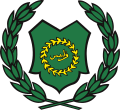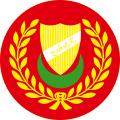| | | | | | | | | | | | | | | | | | | | | | | | | | | | Singapura-
Melaka
est. 1299 | | | | | | | | | | | | |
|
| | | | | | | | | | | | | | | | | | | | | | | | | | | | | | | | | | | | | | | | | | | | | | |
| | | | | | | | | | | | | | | |
| | | | | | | | | | | | | | | | | | | | | | | | House of
Melaka-Johor
est. 1528 | | House of
Melaka-Perak
est. 1528 | | | | | | | House of
Melaka-Pahang
est. 1470 | | | | |
|
| | | | | | | | | | | | | | | | | | | | | | | | | | | | | | | | | | | | | | | | | | | | | | |
| | | | | |
| | | | | | | | | | | | | | | | | | | | | | | | | | | | | House of
Bendahara
est. 1699 | | | | | | | | | | | | | | |
| | | | | | | | | | | | | | |
| | | | | | | | | | | | | | | | | | | | | | | | | | | | | | | | | | | | | | | | | | | | | | | |
|
| | | |  | |  | |  | |  | |  | |  | | | |  | |  | | | | |
|
| | | | Negeri
Sembilan [1]
est. 1773 | | Selangor [2]
est. 1745 | | Perlis [3]
est. 1834 | | Terengganu [4]
est. 1708 | | Kedah [5]
est. 1136 | | Kelantan [6]
est. 1721 | | Pahang [7]
est. 1699 | | Johor [8]
est. 1886 | | Perak [9]
est. 1636 | | | | |
|
| | | | | | | | | | | | | | | | | | | | | | | | | | | | | | | | | | | | | | | | | | | | | | | | | | | | | |
| | |
| | | | Abdul
Rahman
Yang di-Pertuan Agong I
r. 1957–1960 | | Hisamuddin
Yang di-Pertuan Agong II
r. 1960 | | Syed Putra
Yang di-Pertuan Agong III
r. 1960–1965 | | Ismail
Nasiruddin
Yang di-Pertuan Agong IV
r. 1965–1970 | | Abdul Halim
Yang di-Pertuan Agong V
r. 1970-1975
Yang di-Pertuan Agong XIV
r. 2011–2016 | | | Yahya Petra
Yang di-Pertuan Agong VI
r. 1975–1979 | | Ahmad Shah
Yang di-Pertuan Agong VII
r. 1979–1984 | | Iskandar
Yang di-Pertuan Agong VIII
r. 1984–1989 | | Azlan Shah
Yang di-Pertuan Agong IX
r. 1989–1994 | | | | |
|
| | | | | | | | | | | | | | | | | | | | | | | | | | | | | | | | | | | | | | | | | | | | | | | | | | | | | |
| | | | | | | |
| | Munawir | | | | | | | | | | | | | | | Mahmud | | | | | | | Ismail Petra | | | | | | | | | | | | | | | | | | |
|
| | | | | | | | | | | | | | | | | | | | | | | | | | | | | | | | | | | | | | | | | | | | | | | | | | | |
|
| | | | Ja'far
Yang di-Pertuan Agong X
r. 1994–1999 | | Salahuddin
Yang di-Pertuan Agong XI
r. 1999–2001 | | Sirajuddin
Yang di-Pertuan Agong XII
r. 2001–2006 | | Mizan
Yang di-Pertuan Agong XIII
r. 2006–2011 | | Sallehuddin | | Muhammad V
Yang di-Pertuan Agong XV
r. 2016–2019 | | Abdullah
Yang di-Pertuan Agong XVI
r. 2019–2024 | | Ibrahim
Yang di-Pertuan Agong XVII
r. 2024–present | | | | | | | | |
|







